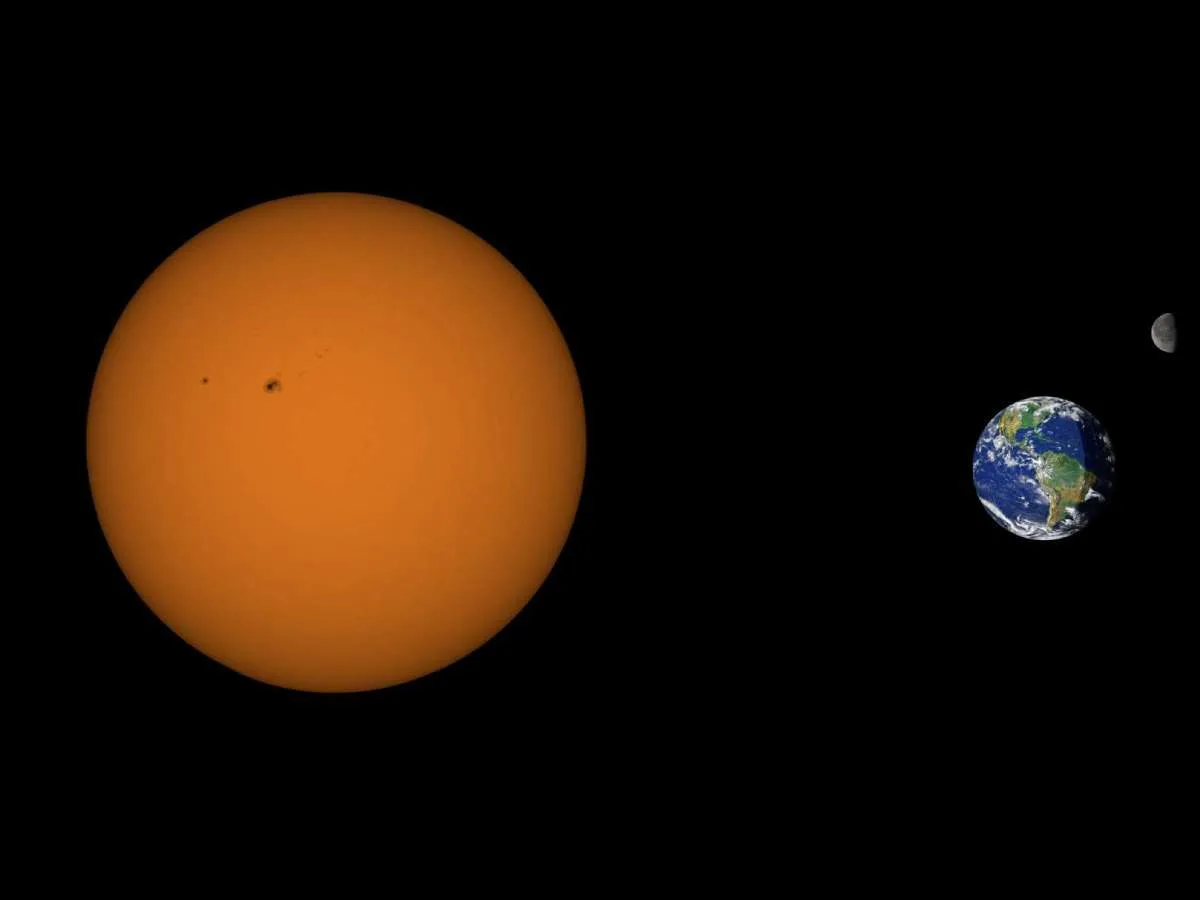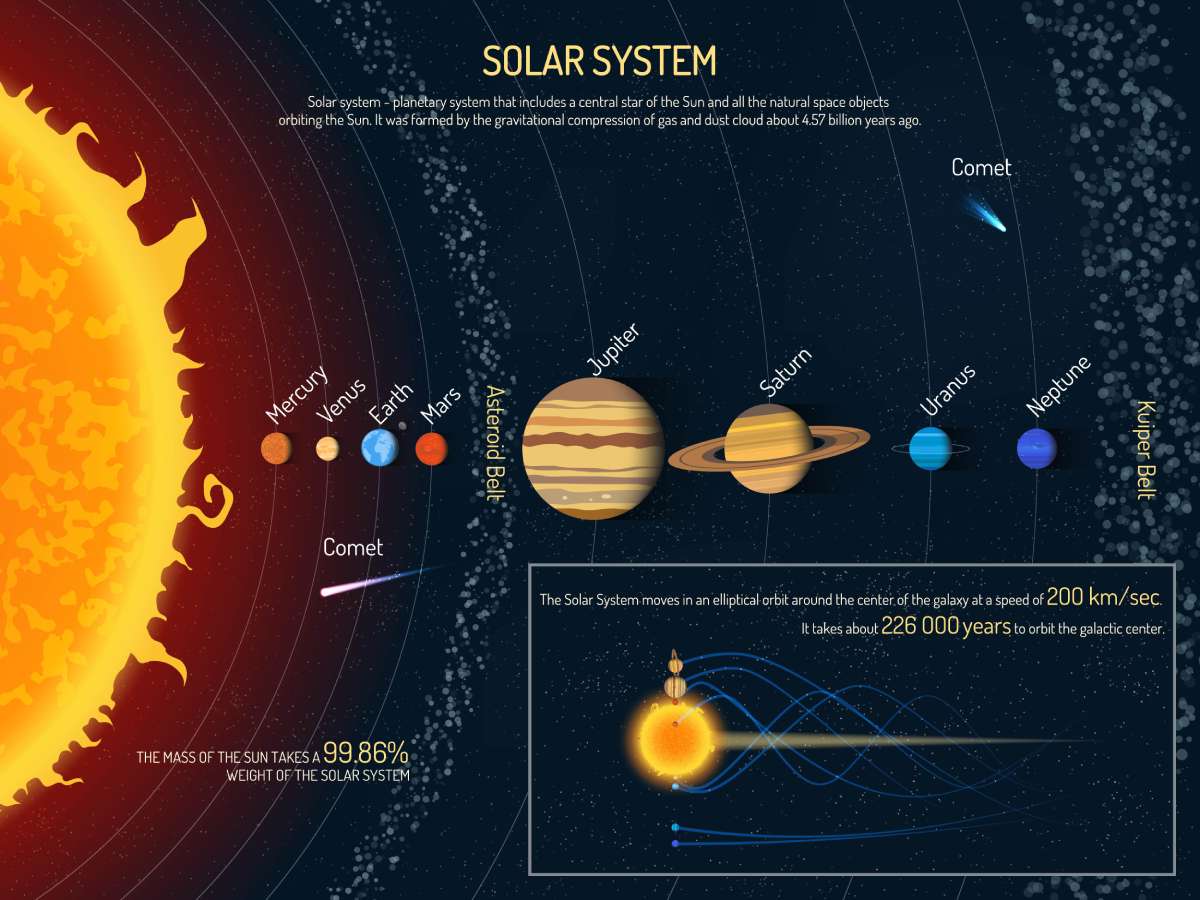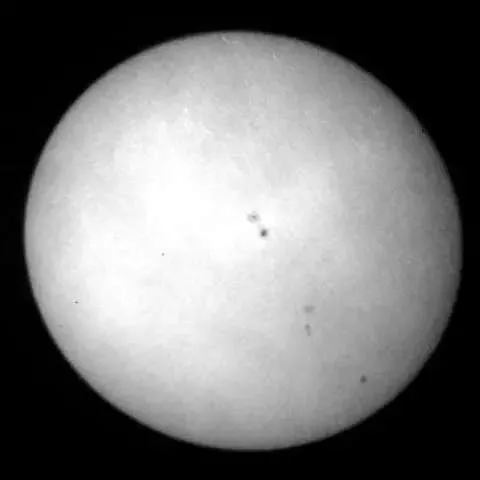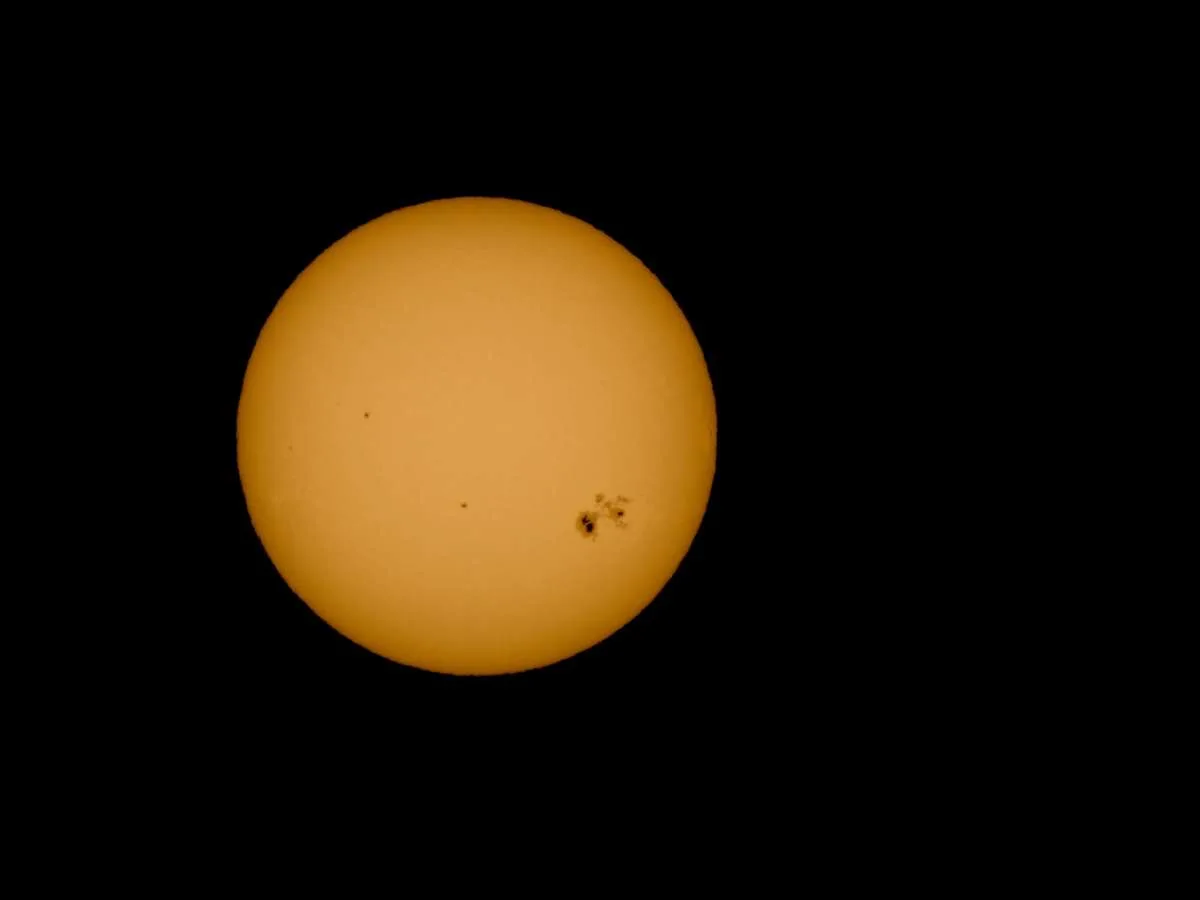Dark Cool Spots On The Sun
What exactly are sun spots on the surface of the sun?

No, I’m not talking about those brown skin spots we get as we age — that are also called sunspots.
I’m referring to black spots on the sun’s surface that pop up occasionally.
The Sun Is A Hotbed Of Activity
The sun may look pretty peaceful from 93 million miles away…
But if you were to get a little closer to it, not only would you likely end up charbroiled, you’d also see that the sun is actually a very active place indeed.
From streams of particles in solar wind to massive solar flares, the sun is literally the hotbed of a lot of violent activity!

When the sun’s surface plasma interacts with its magnetic field, strange things can begin happening on the surface of the sun.
For example, when the magnetic field strengthens, it lowers the pressure of the gas in some areas of the sun’s surface — causing the temperature of the gas to drop. This, in turn, creates relatively small, dark areas that vary in size and location.

Spots on the surface of the sun usually form in clusters (or bands), either above or below the equator.
Those areas are called sun spots.
They are cooler than the surrounding surface of the sun — A LOT cooler.
Let me put that into context for you…
- The sun’s surface is roughly 10,000 degrees Fahrenheit.
- The sunspots, on the other hand, are a mere 6,300 degrees Fahrenheit.
The other interesting thing about sun spots is they typically occur in cycles that last for roughly 11 years. (And when they do occur, they usually make the news.)
While sun spots may look pretty small on the surface of the sun, each darkened spot is actually about as wide as planet Earth!
How To Safely View Sun Spots
It’s important to remember the #1 rule about viewing sun spots:
NEVER LOOK DIRECTLY AT THE SUN, as you will almost certainly suffer some level of blindness.
Fortunately, there is a really safe and easy way to view sun spots (as well as eclipses).
How?
Simply project the image of the sun through binoculars (or a telescope) onto a blank, white piece of paper instead!
TIP: The image might look blurry at first. By adjusting the distance between the binoculars (or telescope) and the paper, you can hone in on a sharper image. You could also try adjusting the lens on the telescope or binoculars to achieve the clearest focus.
Interesting Trivia About Spots On The Sun’s Surface
Sunspots have been an observational curiosity for thousands of years.
In 28 B.C., the Chinese were already watching and recording sun spot activity.
In 1607, Johannes Kepler thought he was viewing the transit of Mercury across the bright surface of the sun’s disc.

However, the sun spot cycle would be determined by an amateur astronomer named Heinrich Schwabe. Starting in 1826, Schwabe began making a series of solar observations that, by 1833, allowed him to determine that sun spots occur in cycles.
Sun spots usually form in the latitudinal range of 5 to 35 degrees — and they typically begin the 11-year period in the higher latitudes and then work their way to the lower latitudes as the cycle progresses onward.
It’s interesting to note that from the year 1645 to 1715, scientist E. Maunder noticed that sun spot activities declined — which is an event called the Maunder Minimum. This period happens to coincide with the Little Ice Age, when many parts of the world endured much cooler than average weather. It was during that time that we experienced the year without a summer.




